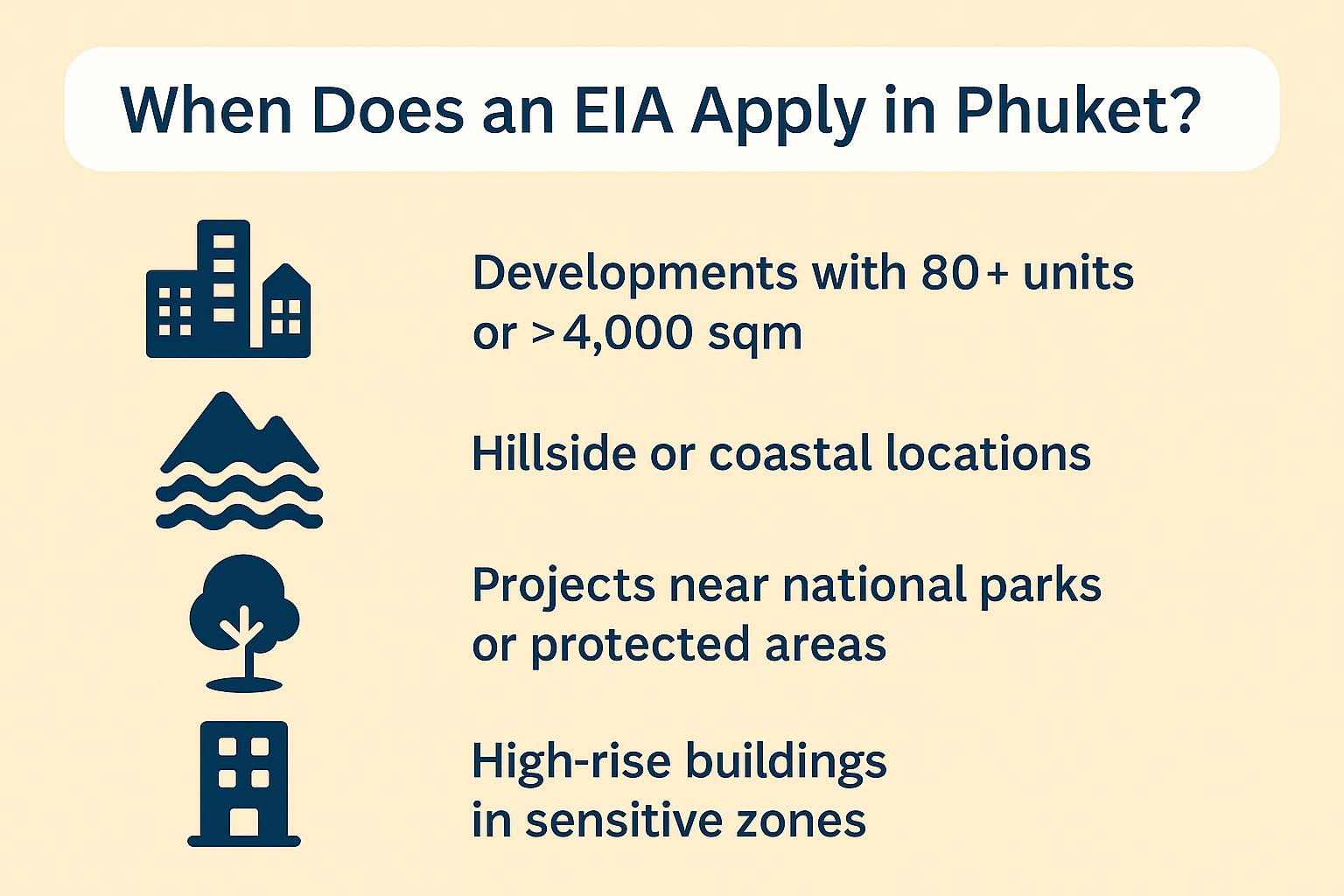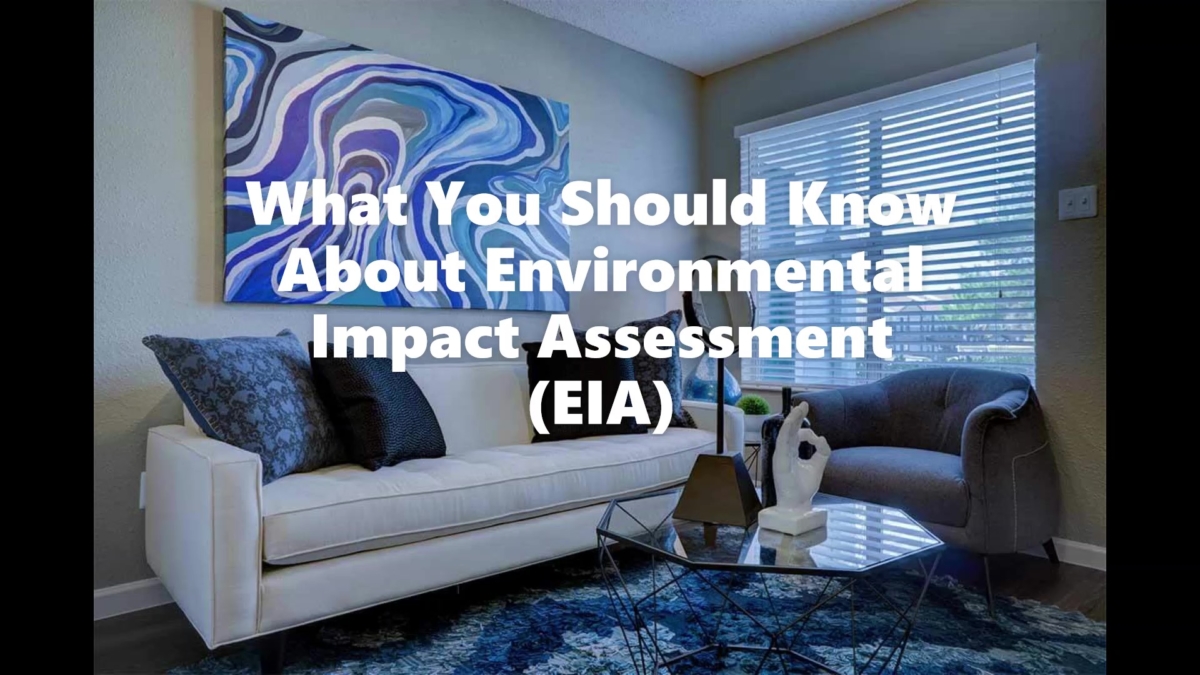The Phuket EIA (Environmental Impact Assessment) process has been in place since 1981 to regulate development on the island. It plays a central role in protecting Phuket’s environment, shaping its growth, and ensuring that large-scale projects meet strict standards before construction begins.
This guide explains what the Phuket EIA is, when it applies, the types of projects that require approval, and why it matters for anyone reviewing property or land.
What Is the Phuket EIA?
An EIA is a legally required study that evaluates the potential environmental and social effects of certain projects before they are approved.
-
Introduced: 1981 under the Enhancement and Conservation of National Environmental Quality Act.
-
Purpose: To balance economic growth with environmental sustainability.
-
Scope: Focuses on large-scale or sensitive projects that could impact Phuket’s coastline, hillsides, water, and communities.
The Phuket EIA ensures that development respects both natural resources and community needs.
When Is a Phuket EIA Required?
Not every development falls under EIA rules. The EIA process applies when projects reach certain thresholds, including:
-
Large condominiums – typically those with more than 80 units or over 23 metres high.
-
Hotels – projects above set size and room count limits.
-
Sensitive locations – projects near mangroves, beaches, wetlands, national parks, or steep slopes.
-
Infrastructure or industry – such as waste treatment plants or harbour developments.
If a project meets these criteria, it cannot move forward without an approved Phuket EIA.
Who Oversees the Phuket EIA Process?
The Office of Natural Resources and Environmental Policy and Planning (ONEP) is Thailand’s central authority for EIAs. In Phuket, reviews are also handled at the provincial level.
The process involves:
-
Submission of the EIA report by developers, prepared by licensed consultants.
-
Expert Committee Review of the findings.
-
Approval or Rejection – no project may legally proceed without approval.
For further details on Thailand’s national EIA framework, see the Office of Natural Resources and Environmental Policy and Planning (ONEP).
Why the Phuket EIA Matters
The EIA system is not a formality, it directly influences the island’s sustainability and livability.
-
Environmental Protection: Safeguards coral reefs, beaches, forests, and fragile ecosystems.
-
Community Safeguards: Ensures infrastructure, water, sewage, and traffic are properly managed.
-
Investor Confidence: Projects that pass Phuket EIA scrutiny are less likely to face legal disputes or future compliance issues.
For anyone considering property, confirming whether a development has passed the Phuket EIA is a key part of due diligence.

Challenges With the EIA
While essential, the EIA framework in Phuket has faced challenges:
-
Delays: Reviews can add time to development schedules.
-
Enforcement gaps: Some projects have been accused of bypassing EIA rules.
-
Report quality: Consultant-prepared studies can vary in accuracy.
Despite these issues, the Phuket EIA remains a vital safeguard against unchecked development.
Additional Considerations in the EIA Process
Beyond the core requirements, there are several important aspects of the Phuket EIA framework that highlight both its scope and its evolving nature:
-
Wide Scope of Review: EIA assessments in Phuket may examine ground pollution, air quality, noise levels, wastewater treatment, visual impact, and the effect on surrounding communities. This ensures developments are measured against both environmental and social standards.
-
Ongoing Compliance: Receiving EIA approval does not mean approval lasts forever. If a project falls out of compliance with regulations, the approval can be revoked, and construction may be halted.
-
Developers Emphasising EIA Approval: Many developers promote their projects as “EIA approved.” While this is an important milestone, it is not a guarantee against future regulatory changes or enforcement actions.
-
Evolving Regulations: EIA rules can change over time. For example, in December 2018, Phuket authorities introduced a ban on developments on slopes steeper than 35%, except for small single houses under 6 metres high. Projects without permits at that point were forced to stop, showing how new regulations can alter or cancel developments.
These factors underline why the Phuket EIA is a critical tool for protecting the island’s environment and ensuring long-term sustainability.
Summary: Phuket EIA Regulations
The EIA, in place since 1981, is the island’s most important environmental safeguard. It determines which projects can move forward, under what conditions, and with what protections in place.
For anyone reviewing land or property, understanding the Phuket EIA ensures greater clarity, compliance, and long-term confidence.
Related Guides
Disclaimer: The information contained in this article is provided for general informational purposes only and does not constitute legal, financial, or investment advice. While every effort has been made to ensure accuracy at the time of publication, property laws and regulations in Thailand are subject to change. Readers should always seek independent legal advice from a qualified Thai lawyer before making any property-related decision or transaction.


Social Contact